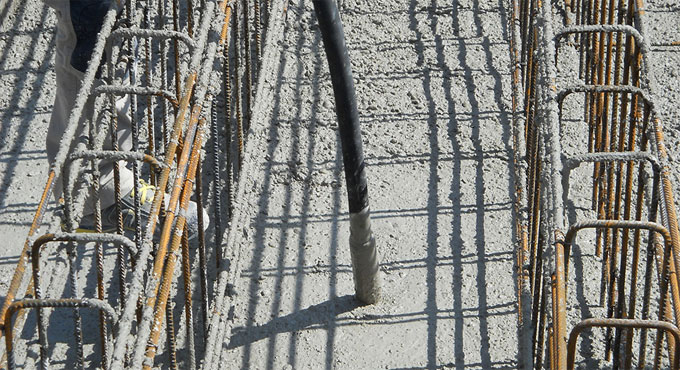
Types Of Concrete Vibrators For Compaction
The compaction or vibration of concrete is considered as the most vital steps at the time of pouring concrete. The purpose of the concrete vibrators is to decrease the number of air pockets inside the concrete mass so that the concrete can be compacted easily.
The internal vibrators or external vibrators are used based on the usage and the location of the concrete to be placed. External vibrators should be applied to get through to the center whereas the internal vibrator should be applied to solidify the center section of the concrete mass.
Without proper compaction, voids, rock pockets, honeycombing, and weak bonding may happen with the rebar. Sometimes, the structural integrity of the walls is significantly impacted with inappropriate compaction. Alternatively, extreme vibration can lead to bulged walls and blowouts.
Immersion Vibrator: This type of vibrator is mostly utilized. It comprises of a steel closed and round tip having an electric vibrating component inside of it. The tip is attached with the electric motor via a flexible hose.
To insert the tube easily among the reinforcing bars, the diameter of the tube should be kept small. To get superior results, insert the vibrator into concrete at the spans of 24 inches or 8 times the diameter of the tube. While applying this vibrator, the insertion time should differ from 30 seconds to 2 minutes.
External Vibrators: External vibrators are connected directly to the formwork at specific points. The positions of these points are based on the thickness of the concrete and where the points are situated in respect of the concrete mass.
This type of vibrator provides a direct vibration effect on the formwork and the concrete to use up more power as compared to other vibrators.
Generally, external vibrators will consolidate concrete in a radius of 18 inches ahead of the formwork. These vibrators are suitable for casting yards and precasting facilities where it is difficult to use immersion vibrators. Besides, it should be adequately strong or situated at specific locations to shift all the formwork at same time. External vibration is effective for the situations where columns or heavy concentrations of rebar lead to the tangling of an internal head. These tools offer specific applications like small pours that need a smallest amount of vibration.
Surface Vibrators: Surface vibrators are found on top of the concrete that is already poured. They are extraordinary when the concrete remains under 10 inches or in flat slabs. These are suitable for shallow structures or slabs and when employed in conjunction with concrete having a low water-to-cement ratio. While pouring a slab or patching a surface, this type of vibrator should be employed.
It is recommended not to utilize a surface vibrator when there are greater volumes of concrete or when the slab is very thick and the lower layer of concrete will not get sufficient vibration.
Rebar Shaker: Rebar shaker has the similarity with a regular vibrator, but in this case, the device is skidded over the top of the reinforcing bar and "shakes" or transfers the vibration into the concrete. It is available with several diameters and can lead to huge savings in man hours and lessens clean-up activities. This tool will curtail the time required for pouring concrete into a cell or in a very tight space.


